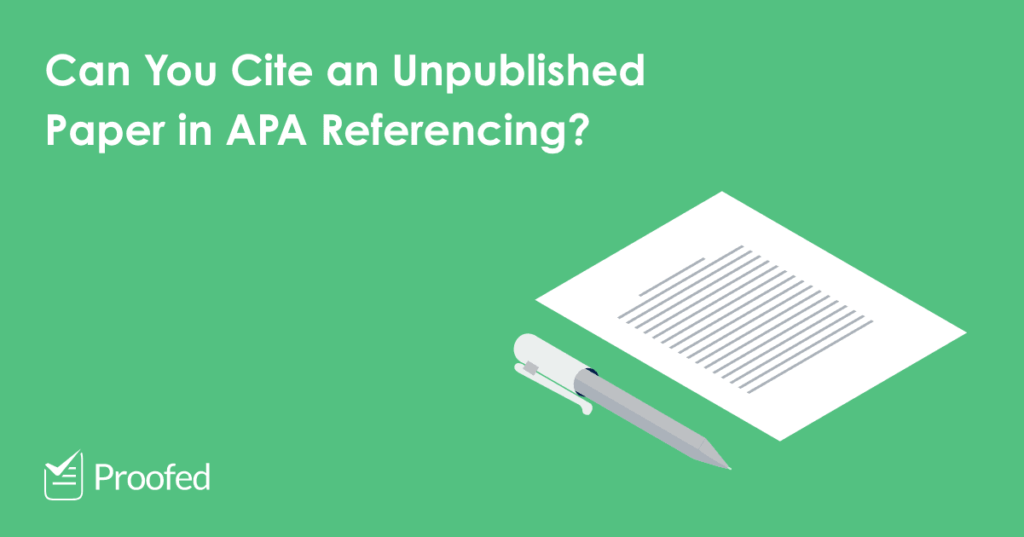Did you know that you can cite unpublished works, such as in-progress research papers or manuscripts, in an essay? Well, you can! The key is citing them correctly. And in this post, we will look at how to cite an unpublished paper or manuscript in APA referencing.
How to Cite an Unpublished Paper in APA referencing
In APA referencing, you can cite an unpublished work in the same way as you would a published one. This means giving an author’s name and a date in brackets. The only difference is that you give a year of production (i.e. when the paper was written) rather than a year of publication:
Few fully understand the publication process (Clarke, 2020).
Like other sources, if you name the author in the text, you do not need to repeat it in the brackets. And if you quote an unpublished paper, you should give page numbers. For example:
According to Clarke (2020), publication ‘is a complex process’ (p. 20).
When a paper has been accepted for publication but not yet published, however, you should use the term ‘in press’ in place of a year in citations:
Few fully understand the publication process (Clarke, in press).
How to Reference an Unpublished Work in APA Referencing
When adding an unpublished paper to an APA reference list, the correct format will depend on where it is in the publication process. But let’s start with works that will not be published at all (e.g. a paper that the author never submitted or that the publisher rejected).
In this case, the correct format is:
Author Surname, Initial(s). (Year of Production). Title of manuscript [Unpublished manuscript]. Department, University Name.
So, in practice, we could cite an unpublished paper like this:
Clarke, J. (2020). The publication process explained [Unpublished manuscript]. School of Journalism, Media and Performance, University of Central Lancashire.
Referencing a Work Submitted for Publication
If a paper has been submitted for publication but not yet accepted, the reference should state ‘manuscript submitted for publication’. However, you should not include any other information about the submission, such as where it was submitted, as this information could go out of date quickly.
Find this useful?
Subscribe to our newsletter and get writing tips from our editors straight to your inbox.
The correct format in this case is therefore:
Author Surname, Initial(s). (Year of Production). Title of manuscript [Manuscript submitted for publication]. Department, University Name.
For example, we would list the paper above as follows:
Clarke, J. (2020). The publication process explained [Manuscript submitted for publication]. School of Journalism, Media and Performance, University of Central Lancashire.
Referencing a Paper in Press
If a paper has been accepted for publication, use the following format:
Author Surname, Initial(s). (in press). Title. Periodical or Journal Title.
As you can see, we now include both:
- The phrase ‘in press’ to show that the paper has been accepted by the journal and is now awaiting publication.
- The title of the journal that accepted it (note, too, that we only use italics for the journal title here, not the title of the paper itself).
In practice, then, we would reference a paper awaiting publication like this:
Clarke, J. (in press). The publication process explained, Publishing Research Quarterly.
It is always worth checking the status of submitted papers before finalising your reference list, too, as they can go from ‘submitted for publication’ to ‘in press’ quite suddenly, leaving your reference out of date.
Hopefully, you will now be able to cite an unpublished paper or manuscript correctly. But if you would like any further help with your writing, why not submit a document for proofreading?
